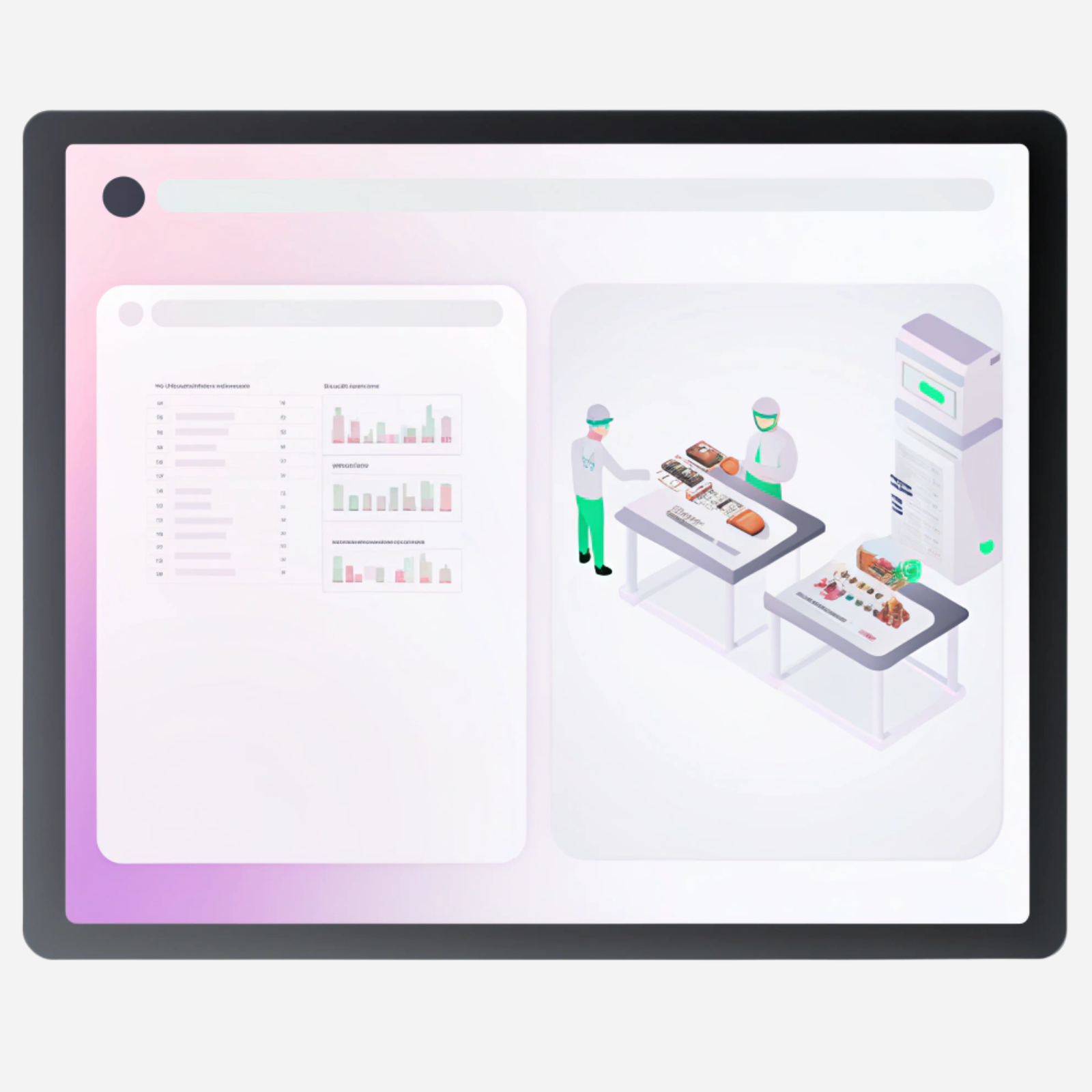
Introduction
Have you ever thought about automating compliance with generative AI? In today’s fast-paced business world, ensuring regulatory compliance can be a daunting task. Generative AI is revolutionizing how businesses approach this challenge by automating routine processes, analyzing vast amounts of data, and assisting with decision-making.
By integrating AI into compliance workflows, organizations can improve efficiency, reduce errors, and stay ahead of changing regulations. In this article, we'll explore how generative AI is transforming compliance management and the potential benefits it brings.
How Generative AI Enhances Compliance Processes
Integrating generative AI into compliance helps businesses streamline how they manage and adhere to regulatory frameworks. By utilizing tools like NLP chatbots and RAG (retrieval-augmented generation) AI, AI-driven compliance capabilities are becoming more flexible and accessible.
At the core of AI-powered compliance systems, several components work seamlessly together:
- Regulatory Filings: Data is gathered from a variety of sources, including documents and records, to create a comprehensive compliance overview.
- Data Pipeline: Data is processed, cleaned, and structured for deep analysis.
- Embedding Model: Textual data is transformed into vectors, making it understandable for AI models.
- Vector Database: These vectors are stored in databases for easy retrieval and analysis.
- AI Agents: Platforms like IONI utilize AI agents to process complex compliance data and provide clear, actionable insights.
- Compliance App: The system consolidates data and analysis to deliver timely information to decision-makers.
- LLM Settings: Tools like Redis and validation layers ensure the accuracy and reliability of the AI outputs.
This architecture ensures AI-enhanced compliance systems efficiently meet regulatory standards while improving operational workflows.
Key Benefits of Leveraging AI for Compliance Management
As we've seen, AI can play a critical role in compliance management, offering numerous benefits for businesses. Here are some key advantages:
- Efficiency Gains: Automating repetitive compliance tasks reduces manual effort, freeing up resources for more strategic activities.
- Improved Accuracy: AI can help minimize human error by analyzing complex regulations and ensuring adherence to legal requirements.
- Cost Savings: With faster processing and fewer compliance failures, businesses can reduce the costs associated with legal fees and penalties.
- Scalability: AI systems can easily scale to handle growing regulatory demands across multiple jurisdictions.
- Real-time Updates: AI tools provide timely updates, helping businesses stay current with ever-changing regulations.
Overall, businesses that deal with compliance and regulations on a daily basis may feel the real benefits after the AI Agents incorporation.
Overcoming Challenges and Risks in AI-Driven Compliance
Compliance experts face a variety of challenges when integrating AI into regulatory processes. Addressing these challenges requires thoughtful strategies and leveraging AI’s capabilities to streamline compliance workflows. Here's a look at the key challenges and how AI for compliance can help overcome them:
- Evolving Regulations: As regulations frequently change, compliance teams must adapt quickly. AI tools can help track legal updates in real time, ensuring companies stay ahead and adjust policies automatically.
- Complexity: Navigating complex regulations is often overwhelming. AI systems can break down intricate compliance requirements into manageable tasks, making it easier for businesses to stay compliant.
- Cultural Issues: Cultural differences across regions can complicate compliance efforts. AI-powered platforms can offer localized insights and tailor compliance solutions, overcoming language barriers and regional variations.
- Resource Constraints: Limited resources may prevent companies from effectively managing compliance. AI-driven automation minimizes the need for human intervention, freeing up resources while maintaining accuracy.
- New Technologies: Adopting new technologies often creates challenges in compliance, as they need to be aligned with existing regulatory standards. AI can continuously evaluate and integrate new tech into compliance workflows, ensuring ongoing compliance.
- Data Privacy and Security: With increasing data privacy concerns, AI can help by implementing secure data processing practices and ensuring sensitive information is handled according to the latest privacy laws.
AI can also automate the adaptation of compliance policies for different regulatory frameworks worldwide, ensuring seamless global compliance and breaking down language barriers through custom applications for web and mobile.
Real-World Application: Generative AI in Action with IONI AI Agent
IONI AI agent is designed to streamline complex compliance tasks. Here’s a breakdown of how specific features enhance business operations:
Gap Analysis
IONI AI agent performs in-depth gap analysis by comparing current compliance frameworks to regulatory requirements. The system can automatically identify missing documentation or areas where policies are not aligned with the latest standards.
Example in Business: For example, a multinational corporation can utilize IONI to ensure their privacy policies are compliant with new global data protection laws, pinpointing areas where additional documentation or updates are necessary before a regulatory audit.
Document Drafting
IONI can generate accurate drafts of compliance-related documents based on preset templates and real-time data, ensuring that each document aligns with current regulations. This feature can draft contracts, reports, or policy documents with high precision.
Example in Business: A legal department in a tech company uses IONI to draft terms of service or data privacy agreements, automatically updating these documents to reflect evolving data protection laws, thereby saving time and reducing human error.
Real-Time Insights
IONI provides real-time insights into compliance status, tracking regulatory changes as they happen. The platform can alert businesses to new legal developments and help adjust strategies or processes accordingly.
Example in Business: A financial institution could rely on IONI to monitor real-time updates in financial regulation, ensuring that they remain compliant with tax reforms or anti-money laundering laws without delay, preventing penalties from missed updates.
Document AI Research
IONI AI agent streamlines legal and regulatory research by instantly retrieving relevant information from extensive compliance databases. The system quickly analyzes vast amounts of text, providing precise insights with citations to support decision-making.
Example in Business: For example, a financial institution can use IONI to swiftly analyze new banking regulations, ensuring that their policies align with evolving compliance requirements. Instead of manually searching through lengthy legal documents, compliance teams receive well-researched summaries and references in seconds, allowing them to act proactively and reduce regulatory risks.
Each feature of IONI AI agents significantly optimizes compliance processes, making them more efficient, accurate, and scalable across various industries.
Best Practices for Implementing AI in Compliance Operations
Integrating AI into compliance operations can significantly improve efficiency, accuracy, and adaptability. To ensure successful implementation, businesses should adhere to these key best practices:
- RAG and LLM Integration: Combining Retrieval-Augmented Generation (RAG) and Large Language Models (LLMs) creates a powerful system for automating compliance tasks. RAG can help classify risk levels, while LLMs offer deeper contextual understanding. This synergy allows businesses to build smarter systems capable of identifying and responding to compliance issues more effectively. With AI agents interpreting regulatory language and assessing data with greater precision, organizations can make timely and informed decisions.
- Data Preparation: Laying the Groundwork: Proper data preparation is crucial for AI success in compliance operations. High-quality, structured data is essential for AI models to make accurate decisions. Clean, validated, and normalized data ensures reliable AI outputs. Additionally, maintaining consistent data across platforms helps prevent compliance issues like missing or incorrect information, which could result in regulatory penalties.
- Coordinating Multiple AI Agents: Managing multiple AI agents in a compliance setting requires seamless integration and coordination. Each agent should focus on specific compliance tasks, such as document review, audit tracking, or transaction monitoring. By working together, these agents can tackle complex compliance challenges across different areas. Automated workflows and intelligent task distribution prevent compliance gaps or redundancies, ensuring efficiency and minimizing risks.
- Continuous Learning and Feedback Loops: AI systems must continuously evolve to keep pace with changing regulations and emerging compliance challenges. Real-time feedback loops are crucial for enhancing AI agent performance. Regular model updates, driven by new data, regulatory shifts, or input from compliance officers, ensure that the AI system remains relevant and accurate. Human feedback also enables AI agents to fine-tune their decision-making, capturing nuances that might not have been addressed during initial training.
- Ensure Human Oversight and Ethical Alignment: While AI can automate and enhance compliance processes, human oversight remains essential for ensuring ethical decision-making. Regular audits of AI outputs and processes help maintain transparency and alignment with organizational values, reducing the risk of unintended consequences or biases.
By following these best practices, businesses can optimize AI-driven compliance operations, achieving improved efficiency, reduced risk, and better overall outcomes.
Conclusion
Adherence to rules, standards, and ethical principles is crucial for ensuring legal integrity and responsible business practices across various sectors such as Healthcare, Legal, and Logistics. With increasing compliance requirements, both large enterprises and smaller companies are turning to generative AI as a vital tool to manage these challenges. AI-driven solutions streamline tasks like document generation and regulatory management, enabling businesses to keep pace with constantly evolving legal frameworks. This shift allows companies to move from time-consuming administrative tasks to more strategic initiatives.
In conclusion, integrating AI for regulatory compliance empowers businesses to continuously monitor and adapt to changing regulations. AI-based compliance solutions enhance key business performance indicators (KPIs) and efficiency by detecting potential risks, maintaining consistency in documentation, and reducing human error.
AI in regulatory compliance ensures adherence to complex laws and supports ethical business practices, making it an invaluable asset for achieving long-term sustainability and legal security.









